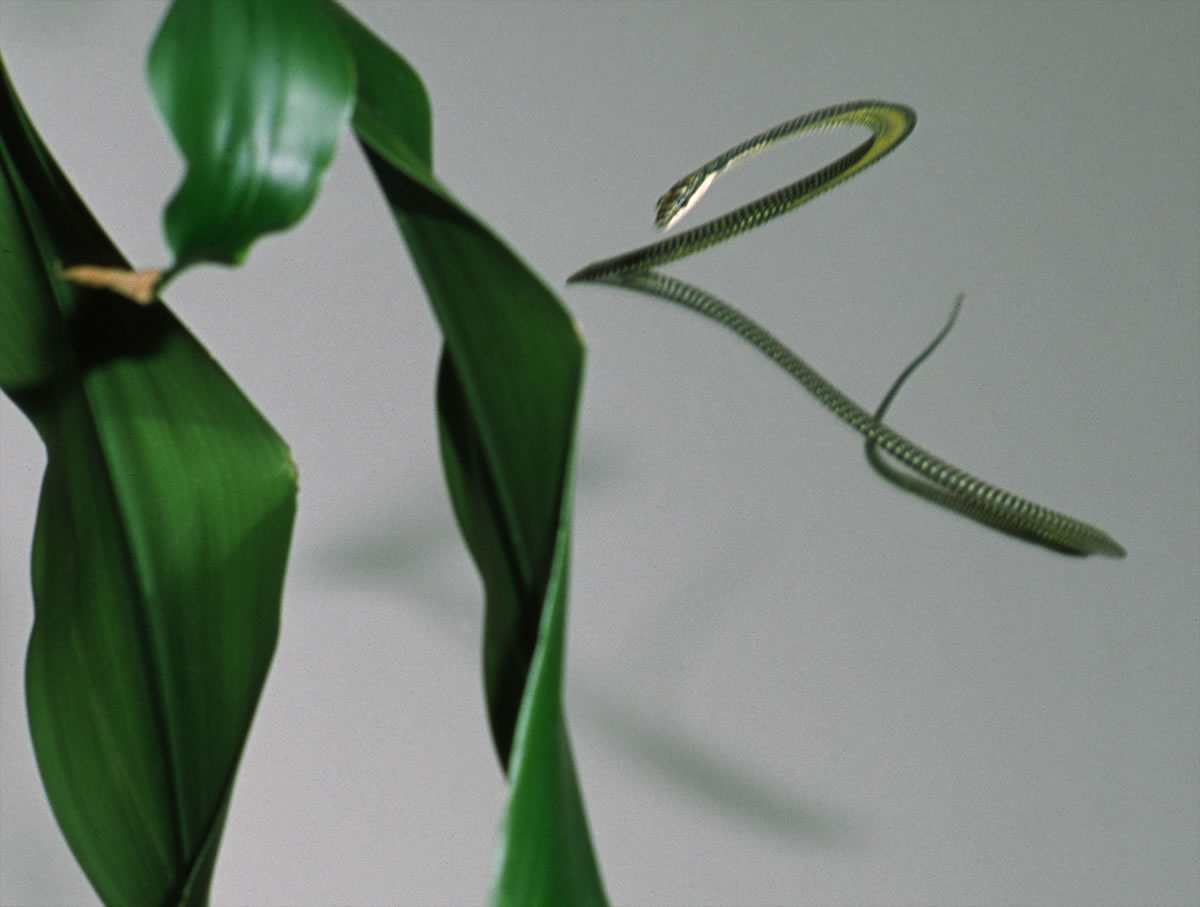An ornate, lime-green snake hangs from a branch. Upon spotting a predator, it suddenly propels itself into the air, flattening and wiggling its body until safely landing in a faraway tree.
Flying snakes sound like creatures from a bad B-movie, but these serpents are elegant gliders that have evolved a special skill that sets them apart. In two new studies, engineers have used simulations to try to decipher how the wingless reptile manages to remain airborne despite its lack of flight appendages.
While in the air, the snakes transform their cross-sectional shape, splaying their ribs and flattening their bodies. Through computational and physical modeling, researchers have discovered that this modified shape helps them become more aerodynamic and allows vortexes of air above their bodies to suction them upwards.
“Little by little, we built a theory about how the snakes are interacting with the air to generate very large lift forces,” said aeronautical engineer Lorena Barba of George Washington University, who authored a study published in Physics of Fluids.
In a tornado, the low-pressure region is in the center, or eye. Similarly, researchers found areas of low pressure that form on top of the snake’s body, creating a small amount of suction and helping to generate lift. In collaboration with flying-snake expert Jake Socha of Virginia Tech, Barba was able to visualize these swirls of air in a complex computer air-flow simulation.
An earlier study by Socha, published in the Journal of Experimental Biology in January, also investigated the flattened shape by using a 3-D printed snake model submerged in a tank of flowing water. Both experiments found that, surprisingly, the reptile has an excellent capacity to generate propelling flight forces, or lift.
They are called “flying snakes,” but to be more precise, they are masters of the glide. Found in the lowland rainforests of Southeast and South Asia, flying snakes are fairly small creatures, growing to lengths of only a few feet and about the diameter of a lipstick. But upon jumping from a tall tree, say 30 feet, they can reach a horizontal distance of 10 times their body length.
As a biomechanist, Socha works at the intersection of biology and physics, studying flying snakes for almost 20 years. He noticed that so much was known about how birds fly, but so little work had been done on serpent flight despite the creature first being recognized in the late 1800s.
“Most of the early writing was natural history-type notes, where some British scientist in Southeast Asia happens to see one go through his tea garden,” Socha said. “‘I tried to whack it with a stick and missed it!'”
The glide starts with a small jump, after which the snake extends itself out to full-body length. It gains speed as it sharply drops; then midflight, its ribs splay apart and cause the normally circular body to flatten. It makes an S-shape and starts to undulate. Eventually, the flight path becomes more horizontal as it glides forward.
In earlier experiments, Socha filmed snakes diving off tree branches using multiple cameras positioned at different angles in order to capture an accurate description of their geometry during flight. Using that data, he created an idealized 3-D model of the snake’s flattened body, which formed the basis for Barba’s computer simulations and his physical fluid-flow model.
“These shapes are very efficient at generating lift when they are positioned at high angles of attack,” Barba said, referring to the angle of the flat surface with respect to the body’s trajectory in the air. “Normally, an airplane wing operates at very low angles.”
Socha has found that serpents tend to maintain angles of attack of about 20 to 40 degrees. Also, some portions of the snake’s body are perpendicular to the trajectory they are moving in, so they become like little sections of a wing. They hit the wind sideways, allowing for more lift.



